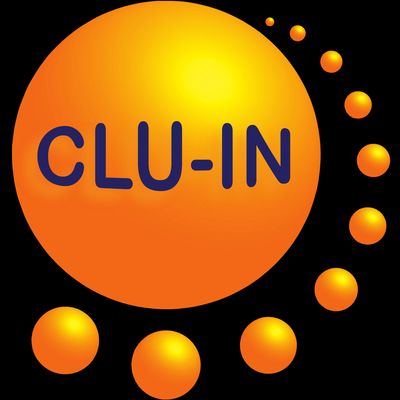Since 1998, The Contaminated Site Clean-Up Information (CLU-IN) website has presented Internet Seminars covering a wide variety of technical topics related to hazardous waste characterization, monitoring, and remediation. For select seminar topics offered since 2012, we are making complete video recordings available through our archives. This feed contains all video seminars archived in the last 12 months. For a complete list of seminars archived since 2000, please visit http://www.clu-in.org/live/archive/. Our Rehabilitation Act Notice for reasonable accommodation is available at http://www.clu-in.org/training/accommodation.cfm. CLU-IN was developed by the U.S. Environmental Protection Agency (EPA) but is intended as a forum for all waste remediation stakeholders. For more information and to view upcoming live offerings, please visit http://www.clu-in.org/live/. For a complete list of RSS feeds available on CLU-IN, please visit http://www.clu-in.org/rss/about/.
http://www.clu-in.org/live/archive
Gesamtlänge aller Episoden: 13 days 3 hours 21 minutes
SRP Water Innovation - An Integrated Approach to Sustainable Solutions: Session IV - Communicating Risk and Engaging Communities: Arsenic and Well Testing (Jul 21, 2016)
The NIEHS Superfund Research Program (SRP) presents the fourth session in the Risk e-Learning series SRP Water Innovation - An Integrated Approach to Sustainable Solutions. Session IV, Communicating Risk and Engaging Communities: Arsenic and Well Testing, will feature efforts by several SRP Centers to engage communities on private water related to well testing and treatment alternatives...
Integrated DNAPL Site Strategy (Jul 19, 2016)
Sites contaminated by chlorinated solvents present a daunting environmental challenge, especially at sites with dense nonaqueous phase liquid (DNAPL) still present. Restoring sites contaminated by chlorinated solvents to typical regulatory criteria (low parts-per-billion concentrations) within a generation (~20 years) has proven exceptionally difficult, although there have been successes...
Issues and Options in Human Health Risk Assessment - A Resource When Alternatives to Default Parameters and Scenarios are Proposed (Jul 14, 2016)
Many state and local regulatory agencies responsible for the cleanup of chemicals released to the environment have adopted regulations, guidance and policies that define default approaches, scenarios, and parameters as a starting point for risk assessment and the development of risk-based screening values...
SRP Water Innovation - An Integrated Approach to Sustainable Solutions: Session III - Water Detection Technologies (Jun 27, 2016)
The NIEHS Superfund Research Program (SRP) presents the third session in the Risk e-Learning series SRP Water Innovation - An Integrated Approach to Sustainable Solutions. Session III ? Water Detection Technologies will feature SRP-funded projects that are developing innovative technologies for the monitoring of hazardous substances in water...
SRP Water Innovation - An Integrated Approach to Sustainable Solutions: Session II - Technologies for Water Remediation (Jun 20, 2016)
The NIEHS Superfund Research Program (SRP) presents the second session in the Risk e-Learning series SRP Water Innovation - An Integrated Approach to Sustainable Solutions. Session II - Technologies for Water Remediation will feature SRP-funded projects related to remediation of hazardous substances in water. The presentations will highlight potential tools for reducing water contaminants, such as polychlorinated biphenyls, trichloroethylene, and other difficult to treat contaminants...
Waterfront Reuse in EPA Region 2: Providing Riverfront Access (Jun 15, 2016)
Reuse of waterfront sites with a history of contamination can provide habitat restoration, as well as recreational and green space amenities for local communities. The webinar will provide case studies of sites in EPA Region 2 that have been cleaned up and redeveloped with waterfront property in mind. Reuse at these sites has restored and preserved ecological habitats and historic places and provided access to and expanded on other development projects...
NEPA and Mining 101, Part 3: Regulatory Process & How the Public and Tribes can Engage (Jun 8, 2016)
The course is designed to provide an overview of mining and NEPA and is geared towards how tribes can participate in the NEPA process. Part 3 will lay out the regulatory process of mining with an in depth look into NEPA review process and major permits associated with mine operations. The session will also provide examples of key opportunities for tribal participation in the development process. Participants will walk away with an understanding and ability to engage in the NEPA process...
Groundwater Statistics for Environmental Project Managers (Jun 7, 2016)
Statistical techniques may be used throughout the process of cleaning up contaminated groundwater. It is challenging for practitioners, who are not experts in statistics, to interpret, and use statistical techniques. ITRC developed the Technical and Regulatory Web-based Guidance on Groundwater Statistics and Monitoring Compliance (GSMC-1, 2013, http://www.itrcweb...
Remedy Selection for Contaminated Sediments (Jun 2, 2016)
The sediments underlying many of our nation?s major waterways are contaminated with toxic pollutants from past industrial activities. Cleaning up contaminated sediments is expensive and technically-challenging. Sediment sites are unique, complex, and require a multidisciplinary approach and often project managers lack sediments experience...
NEPA and Mining 101, Part 2: Mining Environmental Concerns and Issues (May 24, 2016)
The course is designed to provide an overview of mining and NEPA and is geared towards how tribes can participate in the NEPA process. Part 2 will explore environmental concerns at mine sites and how issues can be addressed. Specific topics include types of waste products, surface and groundwater concerns, water treatment, and potential air issues...
